Yes. Termites can come back after treatment.
They are one of the hardest pests to eliminate.
Because termites live inside the wood or soil, it’s easy to miss them when doing specific treatments.
Unfortunately, termites reproduce very fast. Their queen can lay millions of eggs each year.
So, if you miss some of them, they can re-populate.
It’s also possible for termites to return if there’s a nest outside your home.
Termites can move back into your home if you do not have an active chemical repellant.
If not closely monitored, termite re-infestation can go unnoticed for years.
And even if you do monitor termites after treatment, signs of re-infestation can be challenging to identify.
Can termites come back after Whole Strucutre Treatment?
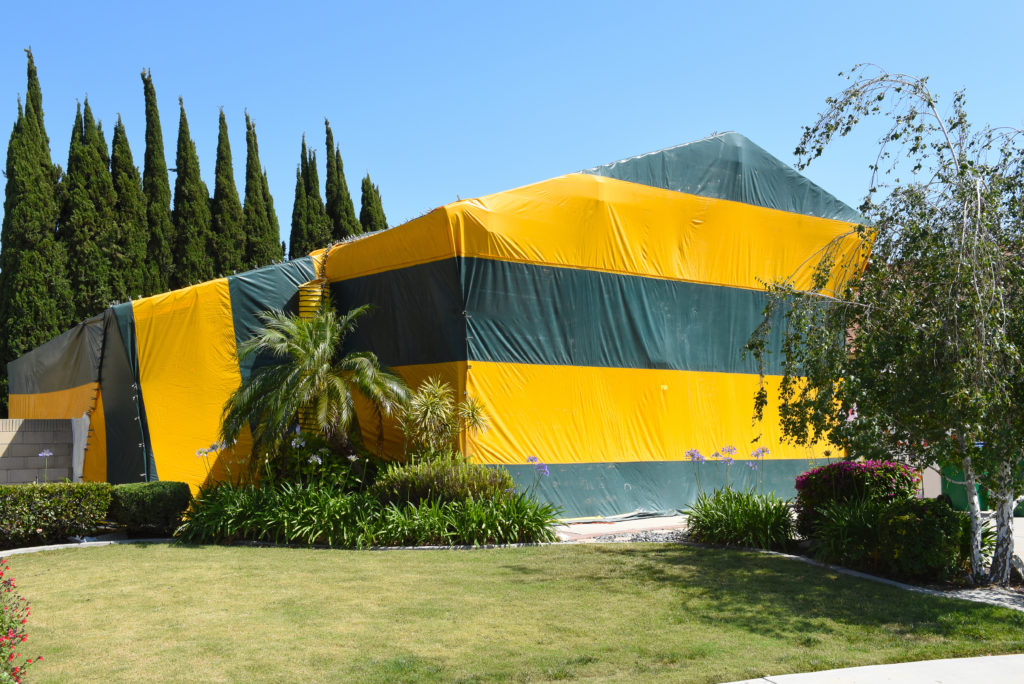
The chances of Drywood termites coming back after whole structure treatment are slim.
When administered correctly, the whole structure treatment is exceptionally effective.
A study showed that a single whole structure treatment was able to kill up to 97.5% of Drywood termites.
And with two treatments, success was 100% guaranteed.
That said, it’s possible for Drywood termites to return if there’s a nest outside your home.
Drywood termites can move back into your home if not closely monitored.
Note that Whole Structure treatment is not effective for eliminating both Subterranean infestation.
Both fumigation and heat treatment cannot penetrate the soil.
Since Subterranean termites live primarily in the soil, the treatment will not eliminate all of them.
If you use a whole structure treatment to kill Subterranean in a building, you’ll need to do a separate procedure to kill the termites hiding in the soil.
Similarly, Whole structure treatment is not effective at eliminating Dampwood termites.
Dampwood termites typically live in near soil or moist environments, which give them protection against the gases or heat used during treatment.
Can termites come back after Localized Treatments?
Yes. But if localized treatments are done correctly, the chances of termites coming back is small.
In this study, localized treatments were shown to have a high success rate regardless of the methods:
- Heat – 98% mortality rate
- Electrocution – 95% mortality rate
- Microwaves – 90% mortality rate
- Liquid Nitrogen – 100% mortality rate
- Injection – 97% mortality rate
That said, localized treatments are only effective if you can spot the location infestation accurately.
That means, it is ineffective at eliminating large infestations.
The only exception to this is if you’re dealing with Subterranean termites.
In which case, you can use soil and bait treatments to get rid of an infestation.
Studies show that soil and bait can eliminate subterranean termites with a 100% success rate after six months.
While it’s slow-acting, they guarantee that subterranean termites will not return to your home.
Why do termites return after treatment?
The most common reason termite return after treatment is that you use the wrong one.
To prevent termites from returning to your home, you must choose the appropriate treatment.
Your choice should depend on two things:
- The type of termite you have
- The severity of infestation you have
For instance, whole structure treatments only work for Drywood termites.
If you attempt to treat Subterranean termites with heat or fumigation, these termites will likely survive.
That’s because heat and gas cannot penetrate the soil.
Since Subterranean termites live in soil, the treatment won’t be able to eliminate many of them.
Another example is if you use localized treatment to treat a large infestation.
Localized treatment is only effective if you can accurately spot termite-infested areas.
But this would be tough to do for large infestations.
Unfortunately, termites re-populate very fast. Their queen can lay millions of eggs each year.
So, if you miss some of them, they can reproduce and infest your home again.
Does my whole house need to be treated for termites?
Whole-house treatment is only necessary if you have large infestations of Drywood termites.
For smaller Drywood infestations, you can use localized treatment.
If you have either Dampwood termite or Subterranean termite, then whole-structure treatment won’t work.
For these termites, you need to do a combination of soil treatment and localized treatment.
That involves treating the exterior of your home and spot treating any infested areas.
How Long Does A Termite Treatment last?
It depends on the type of treatment.
For instance, if a Whole Structure treatment eliminates all termites in your home, your results should last forever.
But, termites can return if there’s a nest outside your home.
Unfortunately, Whole Structure does not prevent outside termites from entering your home.
In contrast, localized Treatments typically come with a residual effect designed to kill termites.
This chemical barrier will prevent termites from entering your home as long as it’s active.
Liquid insecticides, for example, will typically kill termites for at least five years.
Dust treatments typically last as long as the dust is dry and present.
And Foam treatments typically last for about eight weeks.
If termites return to your property during these times, it’s not because the chemical has lost its efficacy.
A more probable reason is that the termites have found an area around your home without a chemical barrier.
How do you Prevent Termites From Coming Back?
Termites are one of the hardest pests to eliminate.
But there’s quite a bit you can do to keep them from coming back.
The appropriate prevention methods will vary depending on the type of termite:
Dampwood and Subterranean Termites
- Keep mulch away from the foundation of your home.
- Remove sources of moisture: leaky pipes, broken pipes, standing water.
- Seal Cracks and Crevices around your home.
- Eliminate any direct contact soil has with wood.
- Treat your soil with termiticide to create a barrier around your home.
- Replace any rotting or damaged wood.
Drywood Termites
- Replace any rotting or damaged wood.
- Seal cracks and crevices to prevent easy access inside your home.
- Properly store firewood: away from your house and off the ground.
- Install bug screens in attic and basement vents.
- Ventilate your home to prevent high humidity in your home.
Frequently Asked Questions (FAQ)
What Are the Signs of a termite infestation?
Termite infestations are hard to spot unless you know what to look for.
Here’s are common signs of termite infestation:
- Flying Termites or Swarmers
Flying termites signify a termite population is ready to expand into new colonies.
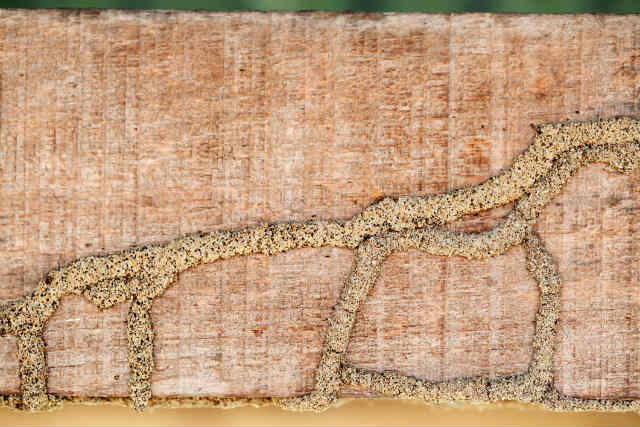
- Mud Tubes
Mud tubes could be a sign of subterranean termites.
A mud tube is made of small pieces of soil and wood.
These tubes help protect termites from predators.
They also protect termites from dry environments when gathering food.
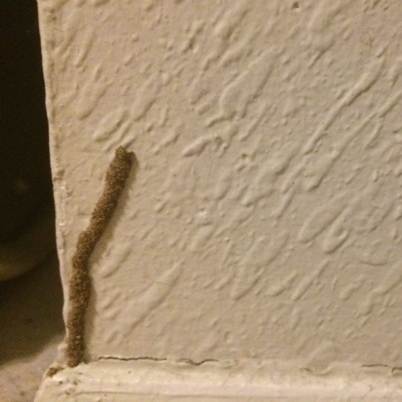
- Uneven or Bubbling Paint
Uneven or bubbling paint could be a sign of termite damage.
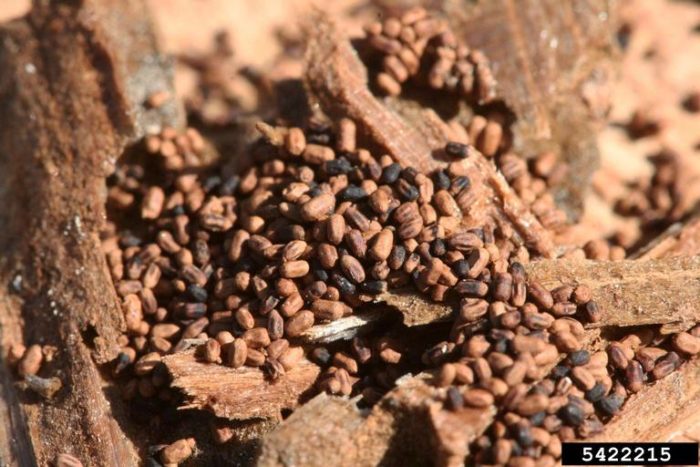
- Frass / Droppings
If you find a small pile of what looks like pellets inside or outside the home, it could be a sign termite infestation.
- Weird Noises
If you hear a quiet clicking sound coming from the walls, it could be a sign of termite infestation.
When worker termites eat your woodwork, they make noises.
You can typically hear them eating if you place your ear against your walls.
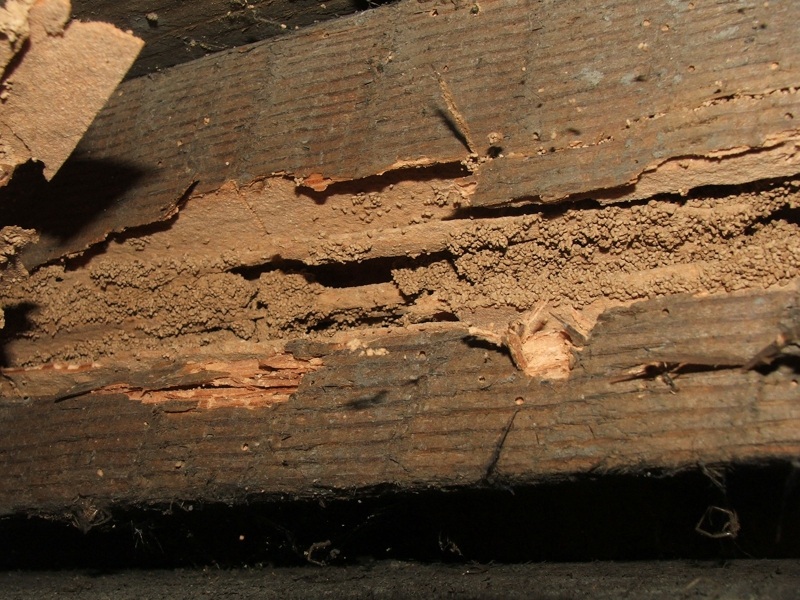
- Hollow Wood
Termites devour wood from the inside out, leaving a weak shell.
As such, when you knock on an area that has termite damage, it will sound hollow.
How dangerous are termites?
Drywood termites are one of the most destructive termites species in the U.S.
These pests live and nest inside the wood.
They are sneaky and can infest your home without being noticed.
Drywood termites create multiple scattered colonies inside the wood, making them difficult to locate.
Do Termites die on their own?
All termites will eventually die. But they will not go away on their own.
They will not eventually go away if you ignore them.
Termite queen can live for decades and lay millions of eggs each year.
If left untreated, termites’ infestations will grow into multiple colonies.
Some termite colonies can reach up to one million termites.
Termites also do not need much to thrive.
They can build colonies by feeding on wood. And your home is enough to feed them for years to come.
To eliminate termites, you need to take action.
Do termites return to the same spot?
If you weren’t able to eliminate all termites in one area, they yes, they will likely return to the same spot.
If you implemented localized treatment in an area, it would likely have a chemical barrier. You can expect termites not to come back to that area until the residual dissipates.
Overall, termites are quite intelligent and will avoid areas where there are dead termites.
Therefore termites don’t usually return to the same spot but are likely to invade somewhere nearby.
Are flying termites a sign of an infestation?
Flying termites, also known as Alates, are typically the first sign of termite infestation.
That’s because, unlike most termites, Alates go out in the open.
They fly to leave their nest during a swarm.
“Swarming” describes an event where Alates gather to mate and start a new colony.
Alates are future kings and queens. Their primary purpose is to reproduce.
If you see a tiny insect with wings inside your home, stop and take a closer look.
If it’s a termite, take immediate action and determine how they got inside.
See if there is a swarm outdoors.
If you have an open window or door, they might have just stumbled into your home.
If there are no entry points or no swarm outside, you likely have an infestation inside your house.
Termite colonies don’t begin producing Alates until colonies have matured.
That means that the infestation in your home is large and needs to be addressed immediately.
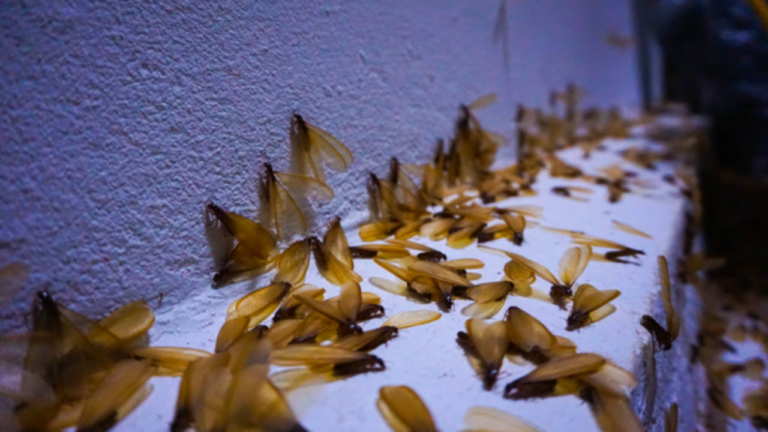
Do I need an annual termite inspection?
It is best to have an annual termite inspection after a treatment.
If your termite infestation was severe, monthly or, quarterly inspections might be necessary.
I also recommend an annual termite inspection if you live in high-risk regions such as those with high humidity.
